-
 Bitcoin
Bitcoin $84,258.9872
0.35% -
 Ethereum
Ethereum $1,590.5943
1.14% -
 Tether USDt
Tether USDt $0.9998
-0.02% -
 XRP
XRP $2.0990
1.26% -
 BNB
BNB $587.2456
1.30% -
 Solana
Solana $132.5296
6.11% -
 USDC
USDC $0.9999
0.00% -
 TRON
TRON $0.2483
-2.37% -
 Dogecoin
Dogecoin $0.1557
1.96% -
 Cardano
Cardano $0.6199
2.68% -
 UNUS SED LEO
UNUS SED LEO $9.1185
-2.93% -
 Chainlink
Chainlink $12.4572
2.80% -
 Avalanche
Avalanche $19.2046
1.97% -
 Toncoin
Toncoin $2.9568
3.52% -
 Stellar
Stellar $0.2397
2.14% -
 Shiba Inu
Shiba Inu $0.0...01181
1.81% -
 Sui
Sui $2.0961
0.90% -
 Hedera
Hedera $0.1602
2.15% -
 Bitcoin Cash
Bitcoin Cash $330.4313
4.06% -
 Polkadot
Polkadot $3.6278
3.32% -
 Litecoin
Litecoin $74.9638
1.65% -
 Hyperliquid
Hyperliquid $16.4916
8.27% -
 Dai
Dai $0.9999
-0.01% -
 Bitget Token
Bitget Token $4.3499
0.87% -
 Ethena USDe
Ethena USDe $0.9990
-0.03% -
 Pi
Pi $0.6068
-1.04% -
 Monero
Monero $216.4766
0.12% -
 Uniswap
Uniswap $5.1795
0.94% -
 Pepe
Pepe $0.0...07203
1.55% -
 OKB
OKB $50.4898
-2.39%
How to avoid forced liquidation in BitMEX futures trading
To avoid forced liquidation on BitMEX, use lower leverage, set stop-loss orders, monitor margin levels, and stay informed about market conditions.
Apr 07, 2025 at 10:35 am

Trading futures on BitMEX can be a thrilling yet risky endeavor, especially when it comes to the possibility of forced liquidation. Forced liquidation occurs when the value of your position moves against you to such an extent that your margin balance can no longer support the position. To avoid this, traders need to understand the mechanics of BitMEX's trading system, manage their risk effectively, and employ strategic trading practices. This article will delve into the various strategies and tips that can help you avoid forced liquidation in BitMEX futures trading.
Understanding BitMEX's Liquidation Mechanics
Before diving into strategies, it's crucial to understand how BitMEX handles liquidations. BitMEX uses a system called the Liquidation Engine to manage positions that are at risk of becoming undercollateralized. When the margin balance of a position falls below the maintenance margin requirement, the Liquidation Engine steps in to close the position. The maintenance margin is a percentage of the contract value that must be maintained to keep the position open. If the market moves against your position and your margin balance drops below this threshold, BitMEX will initiate a liquidation to prevent further losses.
Setting Appropriate Leverage
One of the primary ways to avoid forced liquidation is by setting appropriate leverage. High leverage can amplify both gains and losses, making your position more susceptible to liquidation. It's advisable to start with lower leverage until you gain more experience and confidence in your trading strategy. For instance, instead of using the maximum leverage of 100x, consider starting with 10x or 20x. This reduces the risk of your position being liquidated due to small market fluctuations.
Using Stop-Loss Orders
Stop-loss orders are essential tools for managing risk in futures trading. By setting a stop-loss order, you can automatically close your position if the market moves against you beyond a certain point. This can help prevent your position from reaching the liquidation threshold. When setting a stop-loss, consider the volatility of the market and the potential for sudden price movements. A stop-loss that is too tight may result in premature closure of your position, while one that is too loose may not protect you from significant losses.
Monitoring Margin Levels
Regularly monitoring your margin levels is crucial for avoiding forced liquidation. BitMEX provides real-time data on your margin balance and the maintenance margin requirement. By keeping an eye on these figures, you can take action if your margin balance starts to approach the maintenance margin. If you notice your margin balance getting too close to the threshold, you can either add more funds to your account or close part of your position to increase your margin balance.
Implementing Position Sizing
Position sizing is another critical aspect of risk management. By carefully determining the size of your position relative to your account balance, you can reduce the risk of forced liquidation. A common rule of thumb is to risk no more than 1-2% of your total account balance on any single trade. This means that even if the trade goes against you, the impact on your overall account will be minimal, reducing the likelihood of liquidation.
Utilizing Hedging Strategies
Hedging can be an effective way to protect your positions from adverse market movements. By opening a position that is opposite to your primary trade, you can offset potential losses. For example, if you have a long position in Bitcoin futures, you could open a short position in another cryptocurrency futures contract to hedge against a potential drop in Bitcoin's price. Hedging can help stabilize your margin balance and reduce the risk of forced liquidation.
Staying Informed About Market Conditions
Staying informed about market conditions is essential for successful futures trading. Market news, economic reports, and other factors can significantly impact cryptocurrency prices. By keeping up-to-date with these developments, you can anticipate potential market movements and adjust your positions accordingly. For instance, if there is news of a major regulatory change that could negatively impact Bitcoin, you might want to reduce your exposure to Bitcoin futures to avoid potential liquidation.
Using Trailing Stops
Trailing stops are another useful tool for managing risk and avoiding forced liquidation. Unlike traditional stop-loss orders, trailing stops move with the market price, allowing you to lock in profits while still protecting against significant losses. If the market moves in your favor, the trailing stop will adjust upwards, but if the market reverses, the stop will trigger and close your position, preventing it from reaching the liquidation threshold.
Maintaining Adequate Account Balance
Ensuring that you have an adequate account balance is crucial for avoiding forced liquidation. BitMEX requires a minimum account balance to open and maintain positions. If your account balance falls below this minimum, you may be at risk of liquidation. To mitigate this risk, consider keeping a buffer in your account to cover potential margin calls. This buffer can help you weather market volatility without being forced to liquidate your positions.
Understanding the Role of Funding Rates
Funding rates play a significant role in BitMEX futures trading and can impact your margin balance. Funding rates are periodic payments made between long and short positions to ensure that the futures price remains aligned with the spot price. If you are on the paying side of the funding rate, it can reduce your margin balance, bringing you closer to the liquidation threshold. To avoid this, consider the timing of your trades and the current funding rate environment when entering and exiting positions.
Employing Diversification
Diversification is a key strategy for reducing risk in futures trading. By spreading your investments across different assets and markets, you can reduce the impact of a single adverse event on your overall portfolio. For example, instead of putting all your funds into Bitcoin futures, consider diversifying into other cryptocurrencies or even traditional financial markets. This can help stabilize your margin balance and reduce the risk of forced liquidation.
Using BitMEX's Risk Management Tools
BitMEX offers several risk management tools that can help you avoid forced liquidation. One such tool is the Risk Limit feature, which allows you to set a maximum amount of risk you are willing to take on a single position. By setting a risk limit, you can prevent your position from growing too large and becoming unmanageable. Another useful tool is the Position Calculator, which helps you determine the potential impact of different market scenarios on your position. By using these tools effectively, you can better manage your risk and avoid liquidation.
Learning from Past Trades
Analyzing your past trades can provide valuable insights into what works and what doesn't in your trading strategy. By reviewing your trade history, you can identify patterns and mistakes that led to forced liquidations in the past. This can help you refine your approach and implement better risk management practices. For example, if you notice that you frequently get liquidated during high volatility periods, you might want to adjust your leverage or use tighter stop-loss orders during these times.
Seeking Professional Advice
If you are new to futures trading or struggling to avoid forced liquidation, seeking professional advice can be beneficial. Many experienced traders and financial advisors offer guidance on risk management and trading strategies. They can help you develop a personalized plan that takes into account your risk tolerance and trading goals. By working with a professional, you can gain the knowledge and confidence needed to navigate the complexities of BitMEX futures trading and avoid forced liquidation.
Common Questions Related to Avoiding Forced Liquidation in BitMEX Futures Trading
Q: What is forced liquidation in BitMEX futures trading?
A: Forced liquidation in BitMEX futures trading occurs when the value of your position moves against you to such an extent that your margin balance can no longer support the position. BitMEX's Liquidation Engine then closes the position to prevent further losses.
Q: How can I set appropriate leverage to avoid forced liquidation?
A: To set appropriate leverage, start with lower levels such as 10x or 20x instead of the maximum 100x. This reduces the risk of your position being liquidated due to small market fluctuations. As you gain more experience, you can gradually increase your leverage.
Q: What are stop-loss orders and how do they help avoid forced liquidation?
A: Stop-loss orders are tools that automatically close your position if the market moves against you beyond a certain point. By setting a stop-loss, you can prevent your position from reaching the liquidation threshold. Consider the market's volatility when setting the stop-loss level.
Q: How can monitoring margin levels help avoid forced liquidation?
A: Monitoring margin levels allows you to take action if your margin balance approaches the maintenance margin threshold. You can add more funds to your account or close part of your position to increase your margin balance and avoid liquidation.
Q: What is position sizing and how does it help in avoiding forced liquidation?
A: Position sizing involves determining the size of your position relative to your account balance. By risking no more than 1-2% of your total account balance on any single trade, you can minimize the impact of losses and reduce the risk of forced liquidation.
Q: How can hedging strategies help avoid forced liquidation?
A: Hedging involves opening a position that is opposite to your primary trade to offset potential losses. For example, if you have a long position in Bitcoin futures, you could open a short position in another cryptocurrency futures contract to hedge against a potential drop in Bitcoin's price. This can help stabilize your margin balance and reduce the risk of forced liquidation.
Q: Why is it important to stay informed about market conditions?
A: Staying informed about market conditions helps you anticipate potential market movements and adjust your positions accordingly. News, economic reports, and other factors can significantly impact cryptocurrency prices, so being aware of these developments can help you avoid forced liquidation.
Q: What are trailing stops and how do they help avoid forced liquidation?
A: Trailing stops are orders that move with the market price, allowing you to lock in profits while still protecting against significant losses. If the market moves in your favor, the trailing stop adjusts upwards, but if the market reverses, the stop will trigger and close your position, preventing it from reaching the liquidation threshold.
Q: How can maintaining an adequate account balance help avoid forced liquidation?
A: Maintaining an adequate account balance ensures that you have enough funds to cover potential margin calls. BitMEX requires a minimum account balance to open and maintain positions, so keeping a buffer in your account can help you weather market volatility without being forced to liquidate your positions.
Q: What role do funding rates play in avoiding forced liquidation?
A: Funding rates are periodic payments made between long and short positions to ensure that the futures price remains aligned with the spot price. If you are on the paying side of the funding rate, it can reduce your margin balance, bringing you closer to the liquidation threshold. Consider the timing of your trades and the current funding rate environment to avoid this risk.
Q: How can diversification help avoid forced liquidation?
A: Diversification involves spreading your investments across different assets and markets. By doing so, you can reduce the impact of a single adverse event on your overall portfolio. This can help stabilize your margin balance and reduce the risk of forced liquidation.
Q: What are some of BitMEX's risk management tools that can help avoid forced liquidation?
A: BitMEX offers tools like the Risk Limit feature, which allows you to set a maximum amount of risk you are willing to take on a single position, and the Position Calculator, which helps you determine the potential impact of different market scenarios on your position. Using these tools effectively can help you manage your risk and avoid liquidation.
Q: How can learning from past trades help avoid forced liquidation?
A: Analyzing your past trades can provide insights into what works and what doesn't in your trading strategy. By reviewing your trade history, you can identify patterns and mistakes that led to forced liquidations in the past. This can help you refine your approach and implement better risk management practices.
Q: Is seeking professional advice beneficial for avoiding forced liquidation?
A: Yes, seeking professional advice can be beneficial, especially if you are new to futures trading or struggling to avoid forced liquidation. Experienced traders and financial advisors can offer guidance on risk management and trading strategies, helping you develop a personalized plan that takes into account your risk tolerance and trading goals.
Disclaimer:info@kdj.com
The information provided is not trading advice. kdj.com does not assume any responsibility for any investments made based on the information provided in this article. Cryptocurrencies are highly volatile and it is highly recommended that you invest with caution after thorough research!
If you believe that the content used on this website infringes your copyright, please contact us immediately (info@kdj.com) and we will delete it promptly.
- Kaspa (KAS) Price Prediction Hints at Accumulation Before Potential Surge
- 2025-04-17 22:15:13
- FET Price Prediction: Artificial Superintelligence Alliance (FET) Cryptocurrency Rebounds 10%
- 2025-04-17 22:15:13
- U.S. President Donald Trump Slammed Fed Chair Jerome Powell
- 2025-04-17 22:15:12
- Running a laundromat can't be as "easy" as potential investors may believe it is
- 2025-04-17 22:15:12
- BlockDAG (BDAG) Presale Explosion and Mobile Mining Powerhouse
- 2025-04-17 22:05:12
- Solana (SOL) Price Prediction: Eyes on $180 as Structure Turns Bullish
- 2025-04-17 22:05:12
Related knowledge
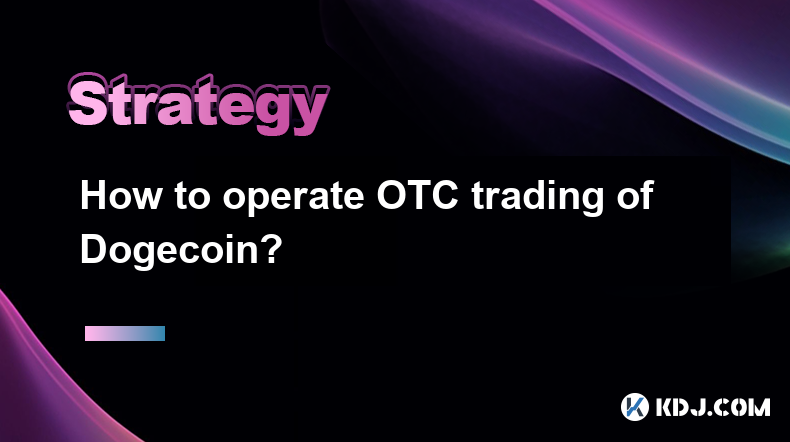
How to operate OTC trading of Dogecoin?
Apr 17,2025 at 03:08am
How to operate OTC trading of Dogecoin? Over-the-counter (OTC) trading of cryptocurrencies like Dogecoin offers an alternative to traditional exchange-based trading. OTC trading can be particularly advantageous for large volume trades, providing more privacy and flexibility. This guide will walk you through the steps and considerations for conducting OT...

How to avoid slippage in Dogecoin transactions?
Apr 17,2025 at 11:07am
Slippage in cryptocurrency transactions, including those involving Dogecoin, refers to the difference between the expected price of a trade and the price at which the trade is actually executed. Slippage can occur due to market volatility, low liquidity, or delays in transaction processing. For Dogecoin traders, understanding and minimizing slippage is ...
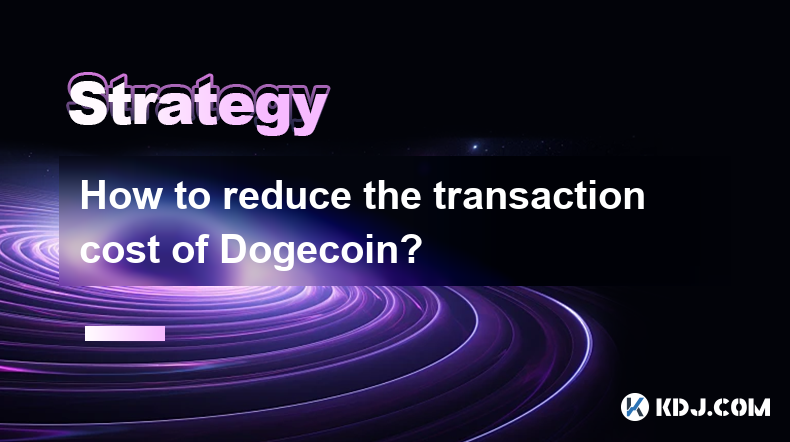
How to reduce the transaction cost of Dogecoin?
Apr 17,2025 at 10:35pm
Understanding Dogecoin Transaction CostsDogecoin, like many cryptocurrencies, involves transaction costs that users must pay to process their transactions on the blockchain. These costs, known as transaction fees, are essential for incentivizing miners to validate and include transactions in the blockchain. Reducing these costs can significantly enhance...
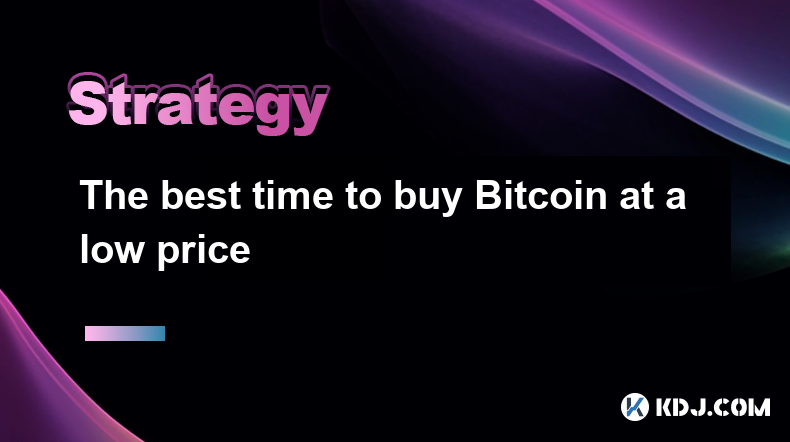
The best time to buy Bitcoin at a low price
Apr 16,2025 at 03:56am
Understanding Bitcoin Price CyclesBitcoin, the pioneering cryptocurrency, is known for its volatile price movements. To identify the best time to buy Bitcoin at a low price, it's crucial to understand its price cycles. Historically, Bitcoin has experienced significant bull and bear market cycles, typically lasting around four years. These cycles are inf...
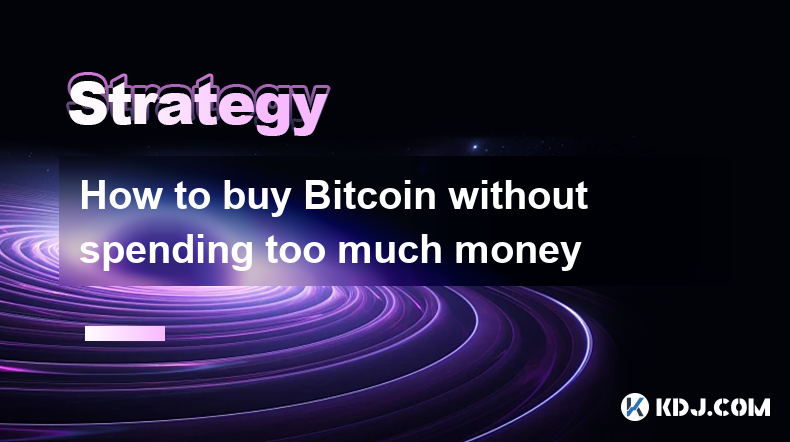
How to buy Bitcoin without spending too much money
Apr 16,2025 at 11:57am
Buying Bitcoin can be an exciting venture, but it doesn't have to break the bank. Many people are interested in investing in cryptocurrencies but are hesitant due to the perceived high costs. Fortunately, there are several strategies and platforms that allow you to buy Bitcoin without spending too much money. This article will guide you through the proc...
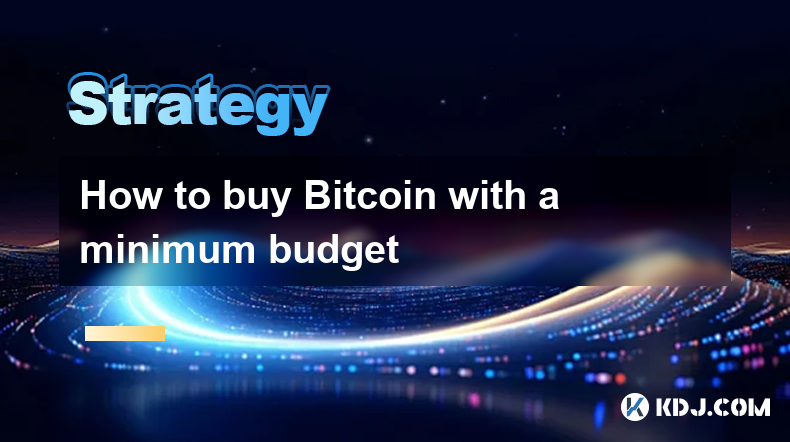
How to buy Bitcoin with a minimum budget
Apr 16,2025 at 01:29pm
Buying Bitcoin with a minimum budget is an achievable goal for anyone interested in entering the cryptocurrency market. The process involves understanding the available platforms, choosing the right one for your needs, and following a few simple steps to make your purchase. This article will guide you through the process of acquiring Bitcoin with a limi...

How to operate OTC trading of Dogecoin?
Apr 17,2025 at 03:08am
How to operate OTC trading of Dogecoin? Over-the-counter (OTC) trading of cryptocurrencies like Dogecoin offers an alternative to traditional exchange-based trading. OTC trading can be particularly advantageous for large volume trades, providing more privacy and flexibility. This guide will walk you through the steps and considerations for conducting OT...

How to avoid slippage in Dogecoin transactions?
Apr 17,2025 at 11:07am
Slippage in cryptocurrency transactions, including those involving Dogecoin, refers to the difference between the expected price of a trade and the price at which the trade is actually executed. Slippage can occur due to market volatility, low liquidity, or delays in transaction processing. For Dogecoin traders, understanding and minimizing slippage is ...

How to reduce the transaction cost of Dogecoin?
Apr 17,2025 at 10:35pm
Understanding Dogecoin Transaction CostsDogecoin, like many cryptocurrencies, involves transaction costs that users must pay to process their transactions on the blockchain. These costs, known as transaction fees, are essential for incentivizing miners to validate and include transactions in the blockchain. Reducing these costs can significantly enhance...

The best time to buy Bitcoin at a low price
Apr 16,2025 at 03:56am
Understanding Bitcoin Price CyclesBitcoin, the pioneering cryptocurrency, is known for its volatile price movements. To identify the best time to buy Bitcoin at a low price, it's crucial to understand its price cycles. Historically, Bitcoin has experienced significant bull and bear market cycles, typically lasting around four years. These cycles are inf...

How to buy Bitcoin without spending too much money
Apr 16,2025 at 11:57am
Buying Bitcoin can be an exciting venture, but it doesn't have to break the bank. Many people are interested in investing in cryptocurrencies but are hesitant due to the perceived high costs. Fortunately, there are several strategies and platforms that allow you to buy Bitcoin without spending too much money. This article will guide you through the proc...

How to buy Bitcoin with a minimum budget
Apr 16,2025 at 01:29pm
Buying Bitcoin with a minimum budget is an achievable goal for anyone interested in entering the cryptocurrency market. The process involves understanding the available platforms, choosing the right one for your needs, and following a few simple steps to make your purchase. This article will guide you through the process of acquiring Bitcoin with a limi...
See all articles























































































